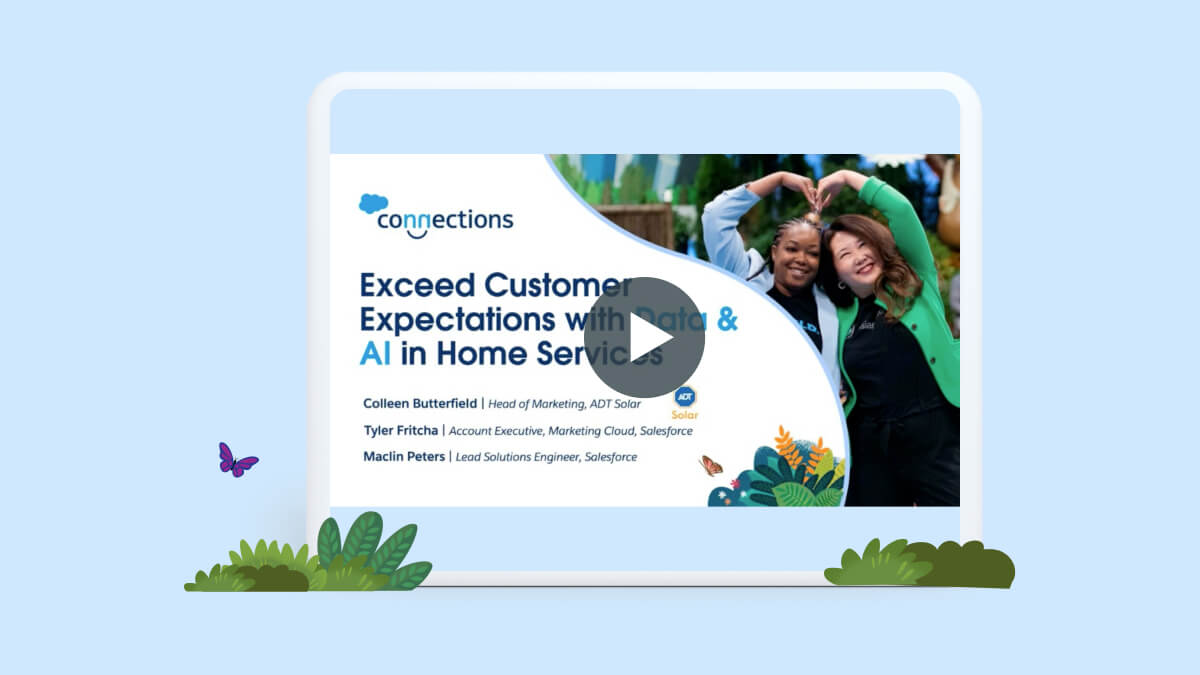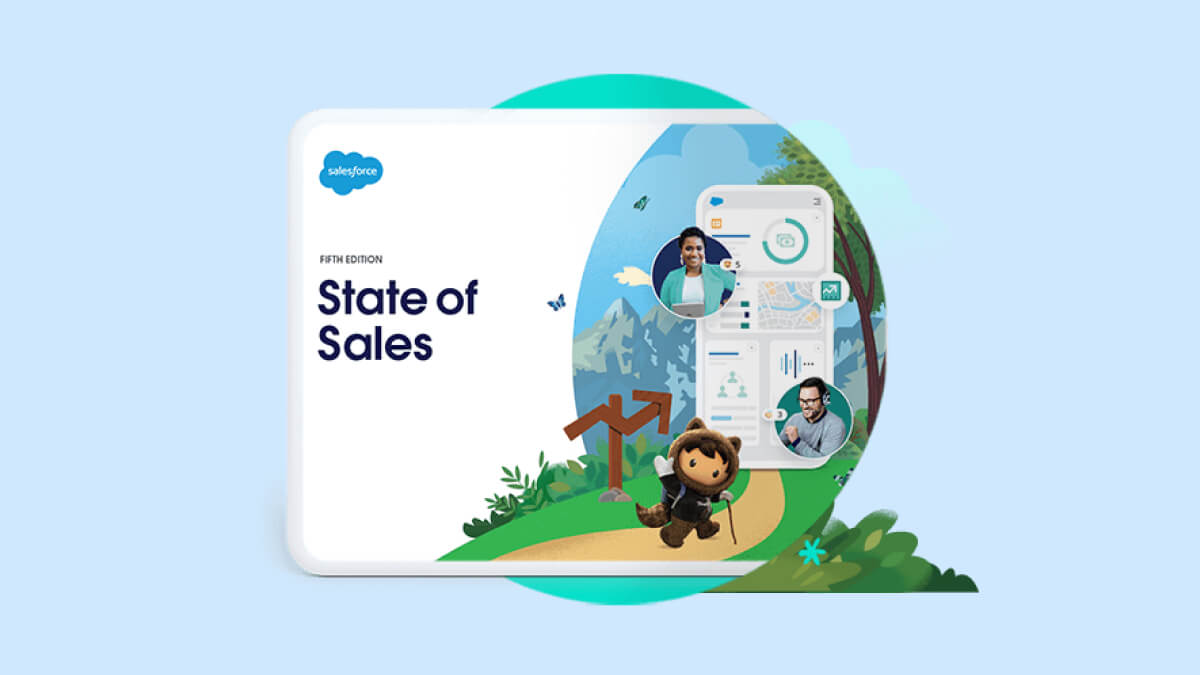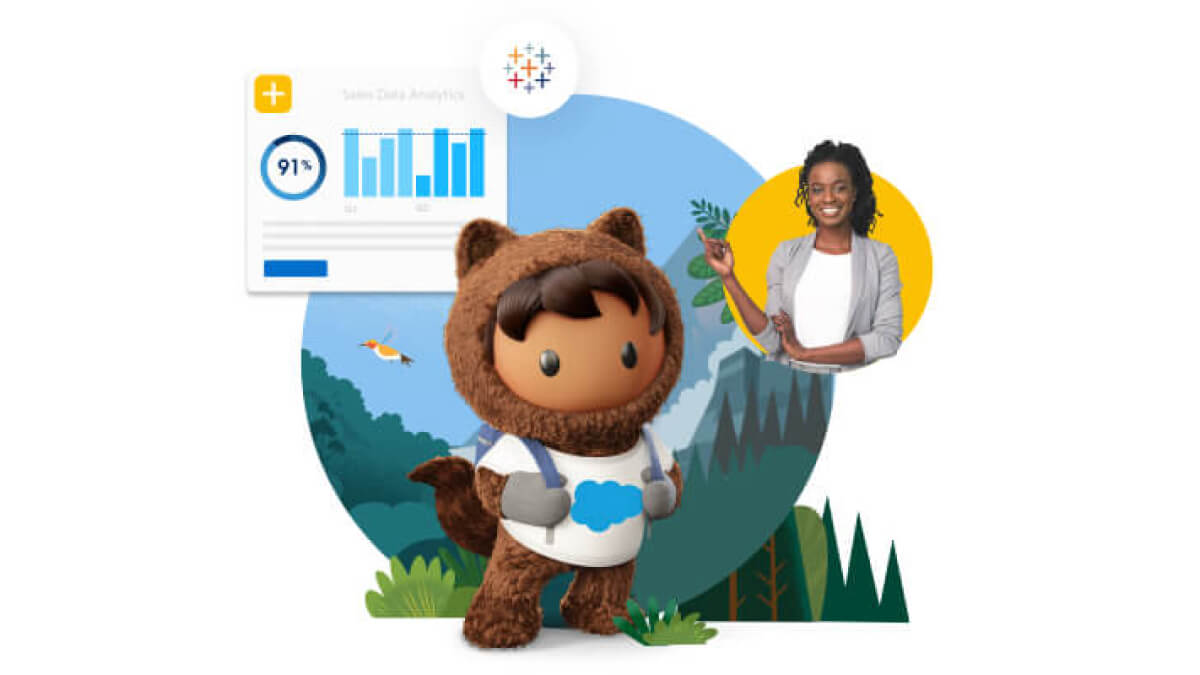Revolutionize Marketing and Drive Personalization in Home Services
See how CRM + AI + Data + Trust is helping home services companies exceed expectations and stay ahead of the competition
Lead Solution Engineer, Salesforce
Providers in the home services sector have a lot of factors to contend with: people have more options, more resources to draw on when making decisions, and higher expectations. They want their home service providers to meet these expectations with more services and more capabilities. And, they expect them to do this while at the same time keeping costs low. This is a challenge, especially in an economically uncertain market where additional investments in resources and equipment are hard to justify without a definite return on investment (ROI).
Home services providers need to find a way to keep up with customer demands, stay ahead of the competition, and gain an edge in the current market.
Trends impacting the home services industry
Despite increased economic insecurity and rising expectations, home services providers are in a great position to succeed. Home ownership is up, home improvement spending is projected to increase, and people are interested in new services and capabilities with the potential to simplify their lives, enhance their day-to-day experiences, and improve their environmental footprint.
It goes without saying that home services covers a broad range of services and sub industries, however there are four main trends that seem to be consistent across the greater home services market.
Reliance on smart technology
Record home values
It’s no secret that home prices across the country have been rising throughout the past couple of years. As home values continue to rise, it is expected that home service spending will follow suit. The reason is likely twofold: new homeowners often take on home improvement projects as they personalize their new homes, and those who may be scared off by rising interest rates/home prices may decide to stay put and update their current homes instead of moving.
Rising interest rates
Increasing sector commoditization
Home services are becoming more standardized, price-driven, and transactional. This is leading to a commoditization of the industry. As a result, it’s become highly beneficial for providers to differentiate themselves through exceptional customer service, specialized offerings, and unique value propositions.
These trends not only represent the challenges home services providers face, but also the areas on which to focus innovation and acceleration efforts. Clearly, the market opportunity for home service providers has never been so big. This means that it’s less about how you find customers, and more about how you cut through the noise, nurture relationships, and effectively market to the individual at hand. And, once you’ve done that, how do you take it a step further and exceed expectations with personalized services, at scale AND at cost?
The answer is data, automation, and AI.
Unlocking the value of data to drive growth
Home services providers have a lot of data at their disposal, but having the data is not enough. They need a way to unlock and activate that data so that it can be used to power organizational growth.
The combination of data + AI + CRM enables home services companies to build, connect, and curate the entire customer journey efficiently and effectively. It allows them to identify and take advantage of each and every opportunity, combining things like CRM, appointment, and engagement data with third party insights to drive customer journeys that are meaningful and memorable. And, because data enables home services providers to refine segments more precisely, it allows them to provide the personalized experience their customers desire, at scale. For example, a security company might know that a customer lives in an area where a lot of home break ins have recently occurred. Their system could automatically flag this, send the customer an email notification or text message (depending on their preference) and offer some AI generated product suggestions that might further that customer’s sense of home security. This not only creates the possibility of increased revenue on the part of the organization, it gives the customer peace of mind and makes them feel personally cared for and attended to.
Into action: How does this work on a practical level?
A best-in-class marketing platform
Today’s marketing managers need the ability to create targeted campaigns and personalized journeys that engage customers efficiently and effectively. An integrated marketing platform can not only help facilitate, but automate these campaigns, enabling marketers to drive connected customer experiences from one centralized location. This type of singular view makes it possible to create, segment, target, and deploy all campaigns using guided processes that remove guesswork, drive personalization, and increase overall productivity.
What’s more, marketers can increase wallet share within the existing customer base, while also finding new prospects for the company through dedicated channels. This entire process not only automates activities, it uses data as an engine to drive dynamic personalization throughout the organization's marketing efforts.
A completely curated customer experience
This ability to track the customer journey, collect data and then automate processes is key for home services organizations looking to create personalized experiences at scale. It allows companies to exceed expectations and create WOW moments, all without sacrificing the bottom line.
Most journey’s begin with a piece of marketing material, for example, an ad. Assuming that ad has been properly created, targeted, and deployed, the next step is for the target audience to see it and take action. However, even the best ad can only take you so far. In order for that initial click to be truly successful, a fully automated, guided journey needs to be waiting on the other side.
What might this journey look like?
Let’s say a recent homebuyer is browsing social media. They come across a targeted ad from a security company, realize they need a security system, and click on the ad. In an ideal world that click would take the customer to the security company’s ecommerce experience, which would be built on a platform natively integrated with the rest of the organization's data and solutions.
This experience would begin with a prompt, asking the customer to login and create a profile. This profile establishes a baseline of data that can now be used to power a personalized experience and help the organization better segment that customer according to their specific circumstances. In short, it allows the security company to show them a completely customized experience every time they log in.
In the case of a new homeowner looking to build a security system from scratch, the company’s CRM would know they are a first time buyer and use that data to recommend a specific base package. Once they add the package to their cart, additional AI generated product recommendations would appear as suggestions. This enables the homeowner to individually add items, further customizing their package. For example, a homeowner might add smoke detectors. This adds value and revenue for the company and enhances the homeowner’s sense of security.
Once they check out, they will be immediately prompted to schedule an appointment. Rather than having to call into a call center, the scheduling is efficiently and easily handled directly on the platform (which also takes care of routing and scheduling the technicians on the back end). Once the appointment has been scheduled, the customer will receive automated and personalized notifications throughout the entire process, as well as the ability to reschedule if necessary. This continues all the way through to the day of the appointment, when the customer receives an even more detailed notification letting them know who their technician is, the ETA, and gives them the option to track the technician’s live location. This continuous communication keeps the customer in the know at every step of the process. It also exceeds expectations, delivering the personalized, transparent, and convenient experience that people crave.
Re-engaging customers who’ve fallen off the purchase path
Combating attrition and keeping customers for life
Building a foundation for future success
Related Content

Article
See How Engineering & Construction Firms are Boosting Productivity

Webinar
Exceed Customer Expectations with Data & AI in Home Services

Blog
Revolutionize Marketing and Drive Personalization in Home Services
Lead Solution Engineer, Salesforce
Maclin Peters is Lead Solution Engineer at Salesforce
More Resources

Report
State of Sales Report

Guide
Your Guide to CRM Analytics for Sales and Service


